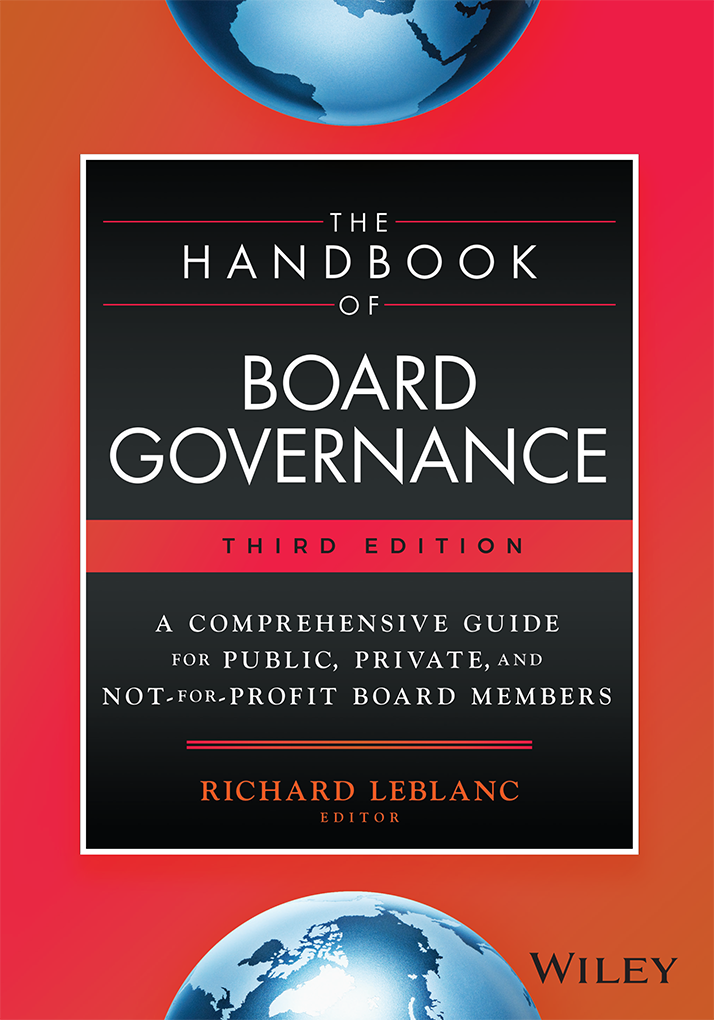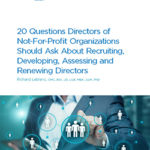Here is a top 10 list reflecting forty recent director and executive interviews and ongoing advice and assessment provided to activist investors and boards.
Infuse your board with a shareholder mindset and directors with value creation track records
“Too many service providers” … “with no industry experience” … “who have not run anything” and “who lack value creation experience” go silent when tough business decisions need to be made, directors say. They “cannot provide the hard core insights to the management team” other than “be careful.” They default to process, “flavors of the day,” and recency, rather than leading substance and strategy. Directors and executives describe such formally independent but experientially lacking directors as “immature,” “provincial,” and “naïve.” Management is more critical: They “lack depth” and “contribute nothing.” Trying to get them off the board, in the words of one director, is like “pulling teeth.”
Remove over-tenured directors and ensure committee chair rotation
Long-serving legacy directors and committee chairs are described as “tired” and “complacent” by fellow directors who have been there “much too long,” and block renewal efforts when “they are the most conflicted.” Research suggests that directors beyond nine years diminish shareholder value. Tough discussions are occurring in boardrooms. Conflicted directors should leave the room during the discussion, directors say. Long-serving directors are loath to give directorships up, arguing they are different. Fellow directors and investors are increasingly unpersuaded by self-interest.
Conduct an independent performance review
One answer, according to head of corporate governance at CalSTRS Anne Sheehan who served on a recent panel discussion with me, is to have independent director performance reviews, with expectations set at the outset, and link the results to renewal. Don’t rely on retirement age as a performance proxy. Directors and regulators are mandating independent reviews. Blockage by self-serving chairs and directors are increasingly falling onto deaf ears. The review should have consequences, which means removing directors who have outlived their usefulness. “Rigorous evaluation,” consistently is a theme in my interviews. If a board blocks independent critical review, or does not act on the results, investors will step into the gap, and it will be far more consequential, costly and adverse.
Engage directly with investors on board performance and composition
What investors want to see now is recent, relevant, validated industry experience contributing directly to the company’s value creation chain, by each and every director. If a board cannot lead a value creation model that is endorsed by major investors, including capital and asset allocation and performance, and what each director’s contribution is to that, the board is vulnerable. Few boards have conducted this internal review with the rigor that an activist does. Camera-ready boards are having structured meetings with long-term shareholders to listen, learn and act. Boards ignore investors at their peril.
Address director origination and its impact on independence
Assume that investors will ferret out any and all conflicts, including friendships. If a director has previous or current relationships, to each other or to management, they lack independence and will not ask tough questions, new research suggests, unlike directors who are recruited primarily on the basis of merit who are unknown previously to the board. These directors are “owned” is the common refrain. Current examples include reciprocity, favours and capture. These directors cannot push back as the cost is too great. They are part of management. Therefore, boards need to rid themselves of these directors and discontinue recruiting based on prior relationships.
Diversify your board to add value
Make sure your board is diverse, and underpinned by the skill sets needed. Many companies do not have board diversity policies. Defensive, perfunctory policies are not useful. The best policies are prescriptive, have measureable objectives, and define diversity, with increasing numbers that a board holds itself responsible for meeting and on which progress is reported. There are measureable objectives for gender, age, ethnicity that align with the company, its business, its industry, and the markets in which it operates.
Focus on company performance over governance box-ticking
Governance has been a cottage industry dominated by self-serving professional advisors and associations, many directors and investors have told me. The pendulum as swung so far, such that investor performance is either entirely absent or an afterthought rather than the primary focus. “You can tick all the governance boxes, and underperform your peers,” one director states. So-called governance awarded companies have even been rife with corruption. Conversely, you can have many governance boxes unticked and perform for investors. Good boards do not let the governance tail wag the performance dog. Investors want performance, not governance accolades. We know that governance rating agencies and proxy advisory firms have metrics that lack prescriptive validity. We see award-winning companies who have failed in their performance, subsequently being attacked by activists with share price appreciation soon following. Activists are unimpressed, and, increasingly, the governance community is questioning its own focus and priorities. One award winning company with a director who has seen the activist light remarked that his board could be “10 times stronger.”
Conduct a thorough transparent director competency review, and act on the results
The director competency matrix belongs to investors and directors, not management. A matrix can be back-doored and manipulated, resulting in a complacent board. An inclusive, dynamic, objective, peer-to-peer, validated matrix review will generate development opportunities, remove directors who are lacking, and generate desired skills in the next directors. Regulators are calling for curriculum vitaes, interviews, and want to see each director is fit for purpose. Boards are wise to ensure that matrix design and administration is expert, free from management control, and reflects investor input.
Focus on softer director attributes
Skills I have recently developed for directors include: integrity, teamwork, communication and commitment. If only one director does not possess these, a board can be poisoned. These attributes can and should be recruited for and validated. A director who is lacking and cannot improve should be promptly replaced. The best boards are embarking on this review.
Display leadership and integrity
Lastly, ultimately, board renewal is about leadership and integrity. The Board Chair position is rapidly maturing. Directors who dig in and entrench are placing their own interests ahead of those of the company, resulting in grave disquiet. This is an integrity issue. Entrenched directors should do the right thing when it is time to go. Activism has become mainstream and shareholders may have much greater power in the future than they do now to propose effective and remove ineffective directors, if directors do not do it themselves.












